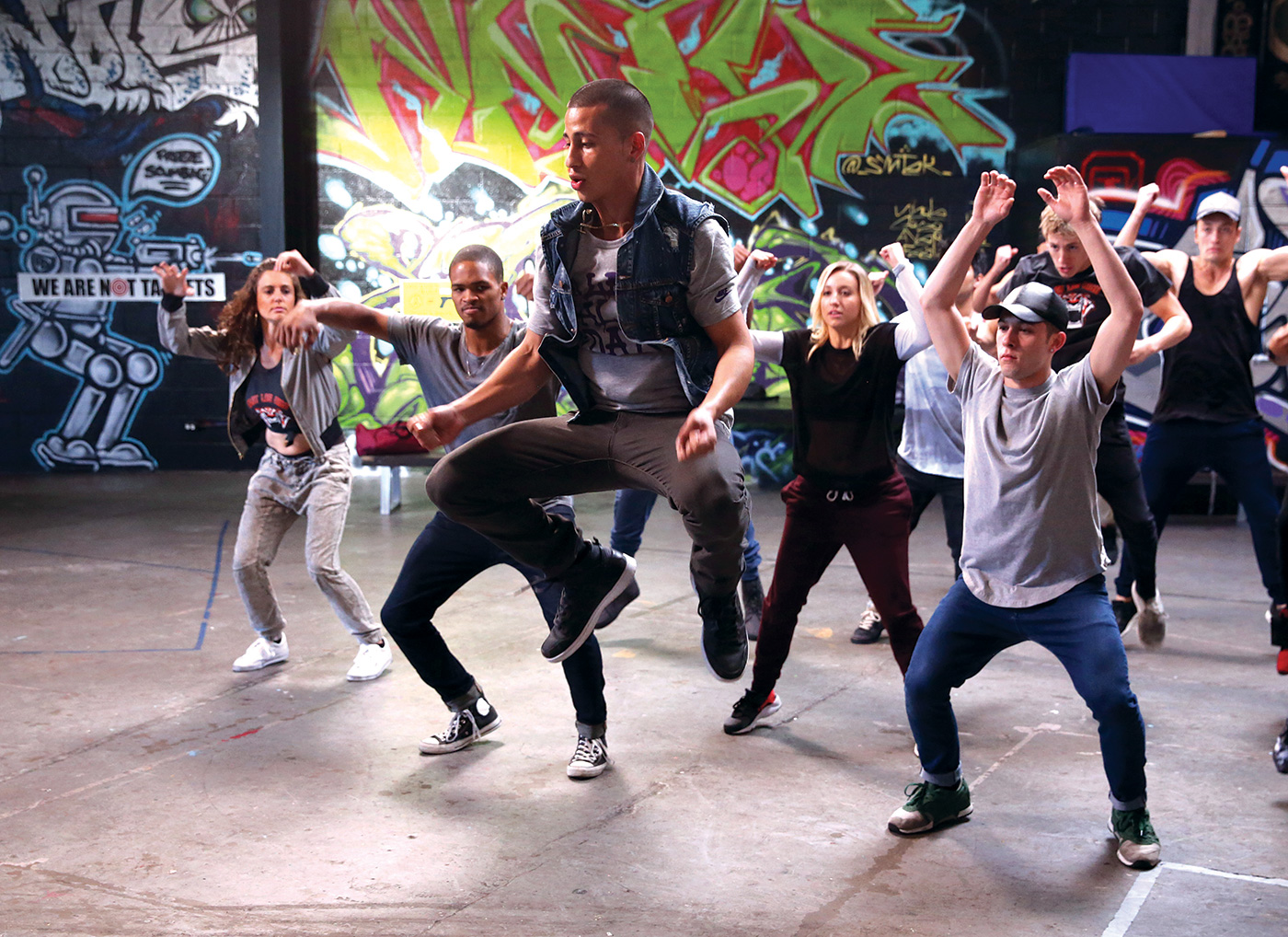Kira Kelly finds “the pure truth” at the dancing heart of Hulu’s hit teen series, East Los High
High school is a rich setting for onscreen drama: jocks, nerds, misfits, outcasts and prom queens, fistfights, despair, passions, and a longing to escape. Add in immigration, teen pregnancy, tortuous love triangles interspersed with wild dance sequences, set it against a backdrop of seething summer heat in East L.A.’s Latino community and you can see why East Los High is a drama worth watching. Streaming service Hulu re-upped the series for a fourth season, it’s the number-one show on Hulu Latino, and it has received five Emmy nominations.
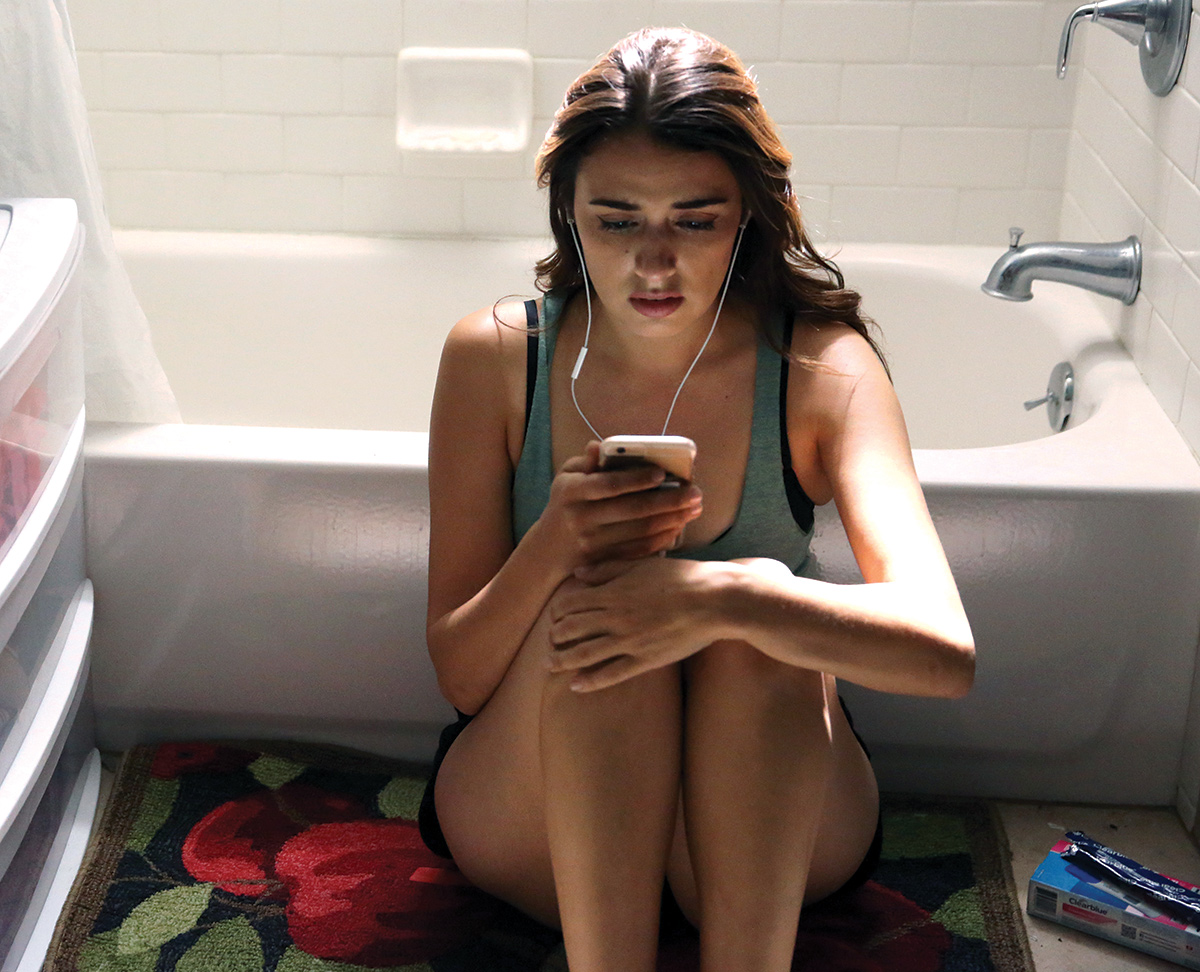
As the new season opens, school’s out for summer and the Bomb Squad heads off to dance camp. Passions run high between Gina (Alex Rodriguez) and Eddie (Carlito Olivero) on and off the dance floor. Camila (Vannessa Vasquez) makes up with Jesus (JD Pardo), who tries to stay on the straight and narrow and out of jail. Jacob (Gabe Chavarria) breaks hearts (again), the family taqueria goes through hard times and the students find power in numbers – and in social media.
East Los High is admirably diverse. Both cast and crew are richly representative of different cultures and predominantly female in many key roles, including executive producer/co-showrunner (Katie Elmore Mota), executive producer/co-creator (Kathleen Bedoya), cinematographer (Kira Kelly), 2nd AC A-Cam (Mariela Ferrer), 1st AC B-Cam (Christine Hodinh), 2nd AC B-Cam (Giselle Gonzalez, Lani Wasserman), production designer (Rachel Myers), and even the writers’ room (including Omaira Galarza and Robin Henry).
Kelly shrugs, and smiles, when the female factor is mentioned. Meeting with me early in the day in Burbank, CA at a Cuban bakery called Porto’s (she is grading Season 4 later that day at a studio down the street), she takes a thoughtful sip of her cortadito (a highly potent shot of caffeine mixed with a smidge of steamed milk) and reflects on the industry’s hot-button issues – gender and diversity.
“I love Ava DuVernay’s push to call it an ‘inclusive’ crew instead of a ‘diverse’ crew,” Kelly offers. Working on a show with people from many different backgrounds and places just reflects the world I live in and definitely the one I want to work in.”
That’s not to say Kelly hasn’t encountered any issues in a still mostly male-dominated camera department and production team. “When I start a job, it takes the crew at least until lunch on the first day to realize, ‘Oh, wait, she does know what she’s doing and what she wants,’” she laughs. “After that, you just get on with the job.”
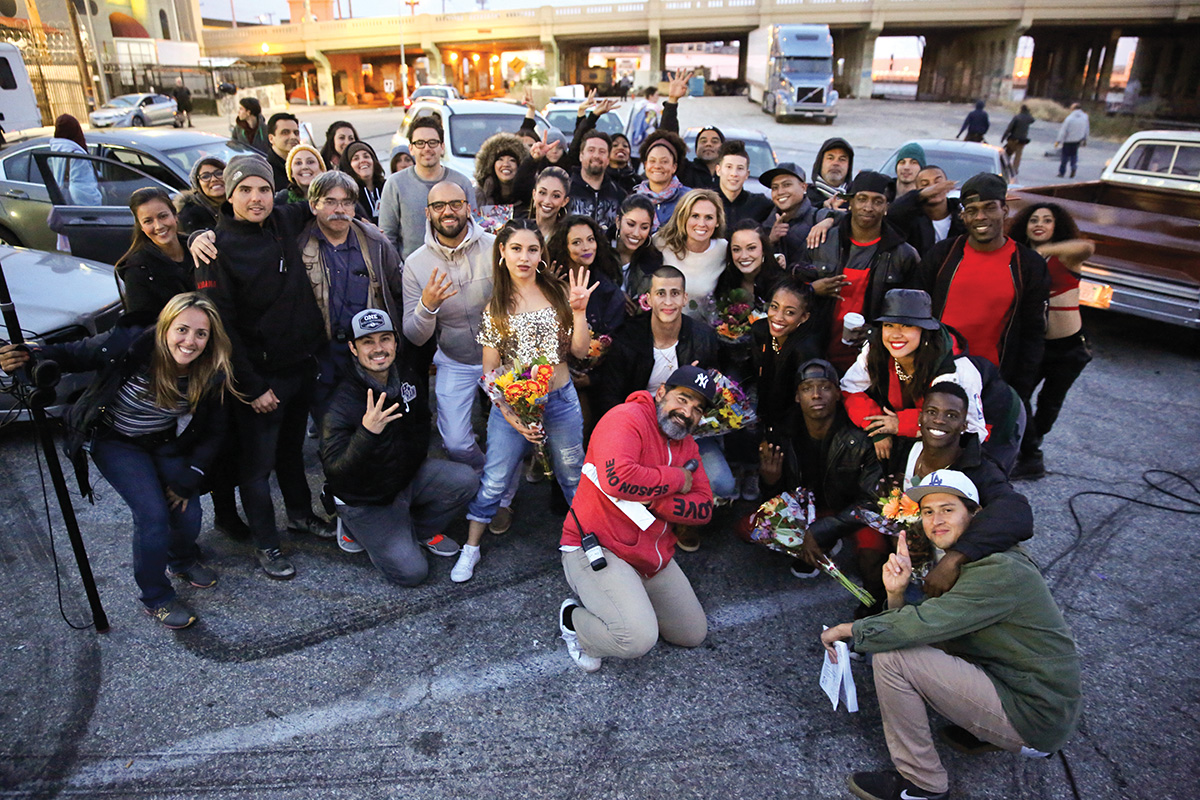
Inclusivity is an apt word for East Los High, according to executive-producer Mota, who also directed two episodes in Season 4 and shares that she was aiming to create a mainstream show with all Latino protagonists. “When we looked at the shows that were out there,” she told me, “there was really no show in the U.S. at the time, even still today, that was authentically portraying the Latino experience in a layered and complex way.
“The only way to tell this in an authentic way,” Mota continues, “was to hire a nearly all-Latino writing room and have strong Latino and female producers working behind the camera. It has been an amazing journey with an incredible team and is helping to launch so many careers. A number of our writers have gone on to run other shows now, and our talent is getting big TV and movie deals. And East Los High itself has grown to be a huge success story that I believe is helping to change the face of television.”
Mota developed East Los High with co-creators/executive producers Carlos Portugal (whose credits include Tyler Perry’s Meet the Browns) and Kathleen Bedoya (story producer on Último Año and former VP, alternative programming, Telemundo). The team secured independent funding outside Hollywood (PMC, the Ford Foundation and other socially-minded philanthropists) and support from 20 public health organizations, including Planned Parenthood, National Domestic Violence Hotline and Advocates for Youth, who all still counsel on the show, along with a teen advisory group to keep it authentic. They produced 24 episodes independently before bringing the show to Hulu.
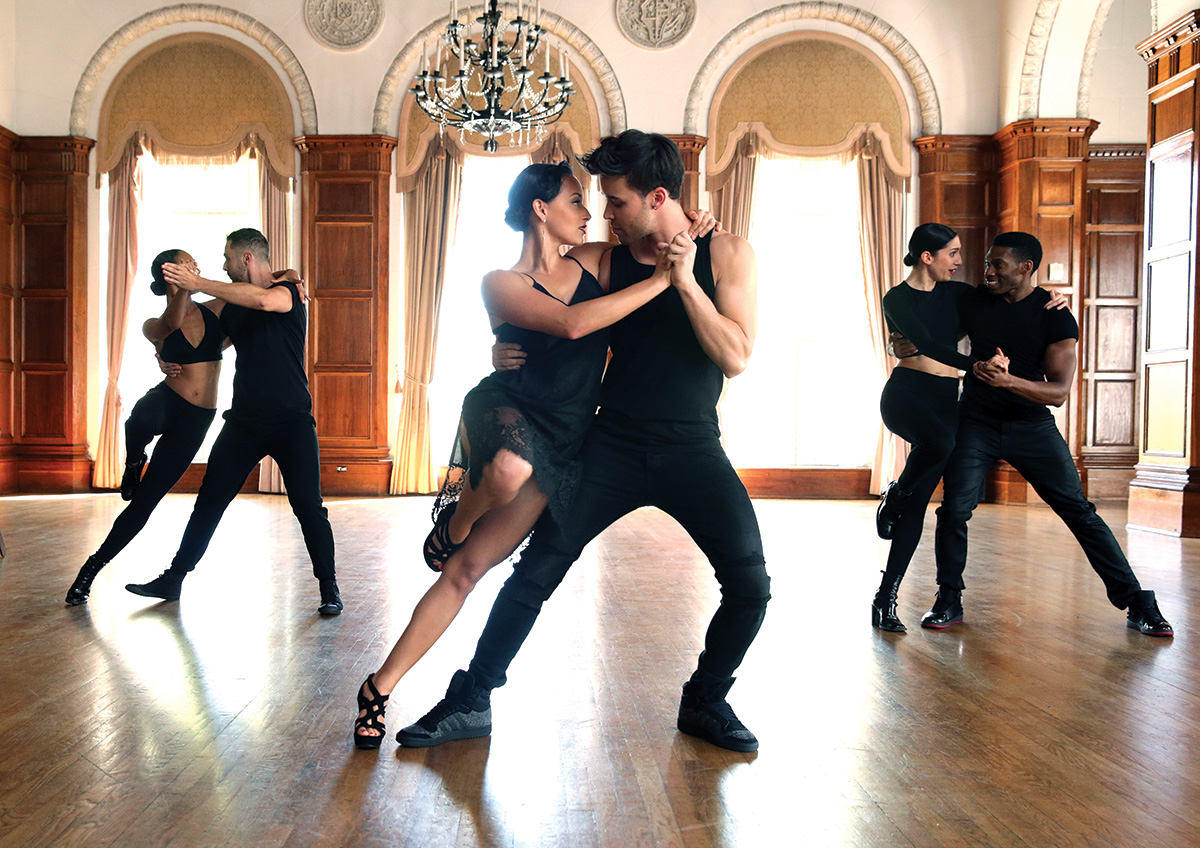
After the first season, Mota started her own production company with her husband, Mauricio, a Brazilian producer who is also an executive producer on East Los High and who led the packaging of the show. Their company, Wise Entertainment, based in Santa Monica, continues to produce East Los High and now has a growing slate of TV and movie projects that is focused on creating content for and by women and underserved audiences that is timely and socially relevant.
Portugal made the Kelly hire. They had worked together on the movie Pop Star after he’d admired Kelly’s work with director Tom Gustafson on Fairies, and the later feature-length version, When The World Was Mine, which won 15 jury and 11 audience awards at festivals around the world. The producer knew Kelly had the right gritty visual style and deep experience in lensing dance sequences:
“Kira and I have developed a shorthand as far as how we communicate on set,” Portugal states. “She understands both the technical and storytelling elements, and is never self-indulgent at the expense of the story. I especially love how she lights our beautiful, diverse cast. East Los High has lots of characters and lots of storylines, so the camera work needs to be simple and on-point. One example is how Kira can shoot two-page scenes, like crowded hallway scenes in the high school, in one extended shoot. The hand-held work during these “walk and talks,” where a dozen of our characters interact with each other, are some of my favorite moments in the series.”
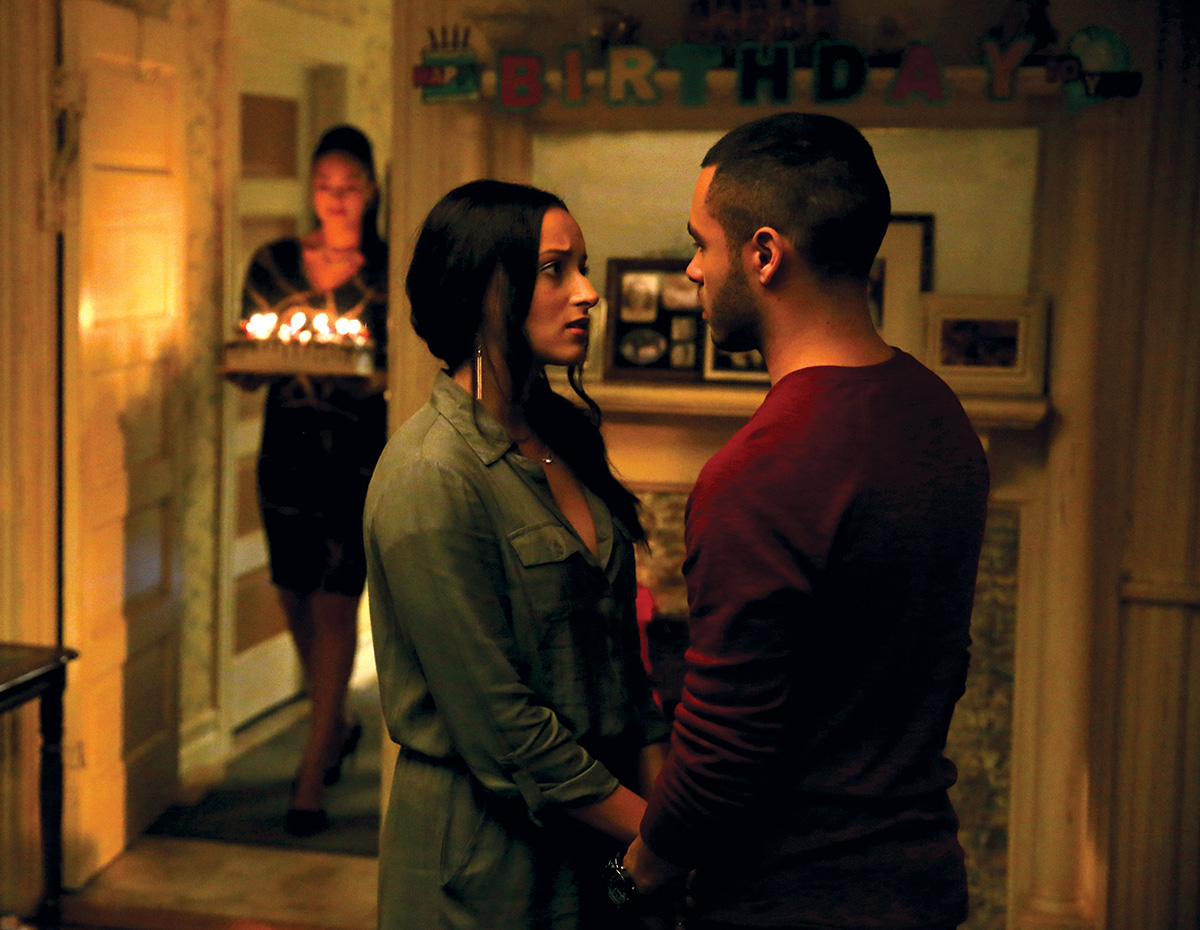
East Los High is “gritty and real” without ever compromising quality. The camera gets in close, blocks out the rest of the world, and viewers see just how these teens are struggling to make it through high school in one piece.
“Gomorrah was one of our first references,” Kelly reveals, “as was a film called Mosquita y Mari. Carlos also loved how L.A. was shot after dark in Nightcrawler. We used that as a reference for some of our b-roll and a few night scenes in Season 3.
“In the most recent season, still photographers Todd Hido and Rinko Kawauchi, and the fashion work of Martina Hoogland Ivanow, have all inspired me,” she adds. “I wanted the everyday scenes to look as natural as possible, almost in a documentary style. We used two cameras, one operated by me and the other by David Tayar, both Arri Amiras, at 2K 4:4:4, with Cooke S4 Prime and, occasionally, Optimo 45-120 lenses.”
Long lenses obscure the background as pull-focus moves help to enhance the characters’ vulnerability. In Season 4, Episode 6, when Camila (Vannessa Vasquez) takes a pregnancy test, the light filtering in from a top window provides an almost halo glow, while the second camera slowly pulls back to reveal her sad reaction.
“We had two different cameras for that scene,” confirms Kelly. “One camera with a 25-millimeter wider lens on a slider doing a slow pull-back, the other camera with a 75-millimeter lens, at a side angle, being able to see the pregnancy strip and her reaction. We had a Jo-Leko to capture the light coming through the stippled glass and create a halo effect around the back of her head to soften it all up. That wasn’t an easy setup because, like the rest of the show, it was on location, in a house, with not much room to maneuver.”
In fact, the many practical locations pose continual lighting challenges for Kelly and two prime collaborators – Gaffer Kyle Warmack and Key Grip Jake Cross. The DP explains that, “for daylight interiors, we’ll usually light from the windows with the diffused M40 and M18. While inside, we’ll dance around the LiteMat 1 or LiteMat 4 to wrap around the key light from the window. Fill was usually a passive bounce of bead board.” East L.A./Boyle Heights locations, where some of the writers, directors and cast members on the show grew up, include Plaza de la Raza, Lincoln Park, Boyle Heights Arts Conservatory, Mariachi Plaza, and family-run taquerias.
“I love the look and texture you get from shooting in real places, even the emotion of it,” Mota offers. “[Co-Executive Producer and Director] Carlos Reza was amazing in helping to find these great locations. It was also fun to hear his stories about the history of the neighborhood or just personal stories of what places were like when he grew up.”
At the graduation party in Season 4’s opening episode, production designer Rachel Myers strung up strands of twinkle lights in a backyard to create ambiance and mask the lack of background in the scene. “We used long lenses and we got a lot of beautiful fuzzy ambience and pretty bokeh in that scene,” Kelly recounts. “I took a 5K with some CTO on it and bounced it into an UltraBounce, and then in smaller areas we would have a PAR-can that we would bounce. We use a lot of colored light in this show, but I always need to have one level of tungsten to make it feel like it’s not so muddled.”
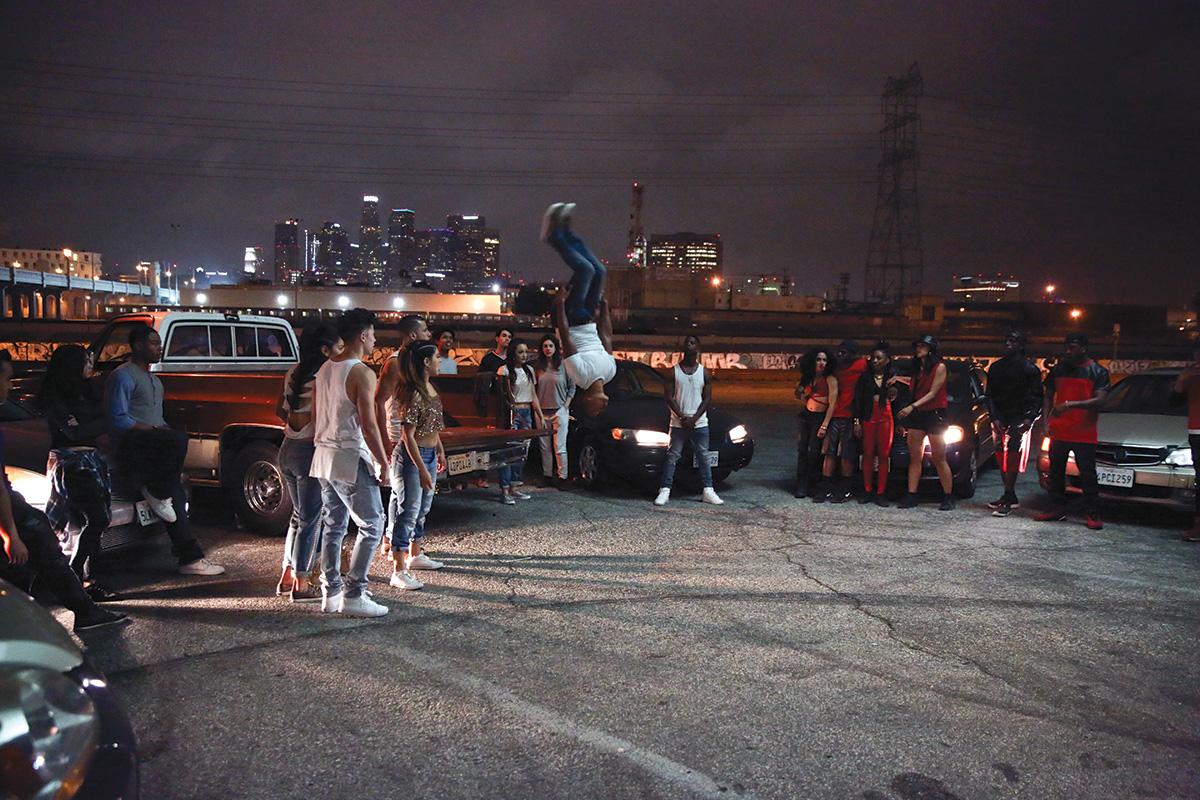
East Los High has tackled a wide array of social issues – domestic violence, teen pregnancy, abortion, and condom use, as well as immigration and racism. In Season 4, Eddie’s (Carlito Olivero) descent into a hell of immigration holding cells and solitary confinement is unique for a lead character in a dramatic series.
“On our first day of shooting for Season 4,” Kelly describes, “we’re in a closed-down jail, with a hot spot on Eddie, using the available sunlight, and I think that was almost three stops over. We wanted to make it feel as dingy and sad as possible. Later on, in Episode 5, we use 18-millimeter lenses in Eddie’s face, shooting at 120 frames per second with a 45-degree shutter to show him going down the rabbit hole as he reflects back on how this immigration holding-cell experience changed him. Carlos Reza was our director for that episode, and we caught an American flag reflected in one shot when Eddie is being pulled away.”
To its credit, Mota says, Hulu has never shied away from the difficult material.
“We had a lot of meetings and interest from potential buyers, and then we met Hulu, and they just got it,” she recalls. “Even though 2013 [when the show began] was a different media landscape, we knew Hulu was the future of content and to reach our audience anywhere, anytime, on any device was vital. We continue to work with a great team there, including Jessica Kumai Scott, manager, content development; Beatrice Springborn, head of original programming; and Craig Erwich, SVP, head of content.”
Scott confirms that Hulu is pleased with the product. “We were lucky to have East Los High come in as an acquisition, and immediately find a sizable, diverse, and passionate audience, which made us want to help produce the second season and help the show grow. I think it caught on because even with all of the TV in the marketplace, there’s still nothing like this out there.”
For all its social relevance for the streaming generation, much of East Los High’s popularity comes from the dancing – raw and exhilarating, with the teens in cut-off denim shorts, hoodies, leather boots, scrappy t-shirts, cool braids, and crimped hair with feathers. The lead choreographer is Reina Hidalgo, a Cuban woman who has been a principal dancer with Pink, Rihanna, J. Lo and more.
“My favorite setups were anywhere we could watch Reina choreograph,” Gonzalez shares. “I have always loved shows like So You Think You Can Dance, and getting to be a part of a crew filming dance numbers made me so excited! It was also fun to couple that with Kira’s experimentation and to watch her and her lighting crew make the set look truly glamorous. She used different angles, interesting Steadicam moves, and special filters [like attenuators or BDFX] that gave the dance numbers a pop of color.”
The huge dance scene in Season 4 occurs in Episode 11. Mota directed the tightly orchestrated night shoot, which included the LAPD (in the script) on site, a three-camera setup and Kelly keeping a wary eye on the horizon for the sunrise.
“From the minute the sun dropped, we were off, working through the night,” the cinematographer remembers. “Two groups, 14 dancers total, in a fierce underground dance off. Down at the L.A. River, right by the train tracks, cars are parked in a circle with headlamps on surrounding the dancers. We had an 80-foot Condor with a 12-foot UltraBounce overhead, a T12 with a steel green bounced from the floor, three cameras – all Arri Amiras, two handheld and one on a 45-foot Technocrane.
“For the floor units we had PAR-cans on menace arms, which had full CTO and deep amber on them as a color contrast between the cool, overhead ambient and what was happening from the ground,” she adds. “Across the river, there was a second generator with a 32-light Dino backlighting the bridge in steel green, and downtown L.A. skyscrapers were lighting themselves. We made it just in time before the sun rose.”
First AC A-camera Taylor-Wehr recalls the intensity of the final shot.
“It was one of those nights for which, after filming for hours, we needed to give it one final push. The dancers were killing it, the Technocrane was on point and, by this time, camera operators David Tayar (on Technocrane), Heather Brown, and Bobby Lam know the dance sequences by heart. By the time Mota yells, ‘Cut,’ the camera team members all look at each other like we do on rare occasions and shout in unison, ‘Daaaaaammnn,’ because sometimes you just get that magic take, and everyone knows it.”
“What I’m personally most proud of is how we portray the way Latinos live and coexist in Los Angeles today,” Portugal concludes. “No judgment, just the beauty and simplicity of our everyday life, which Kira captures so candidly with her camera work.”
by Sophia Stuart / photos courtesy of HULU

